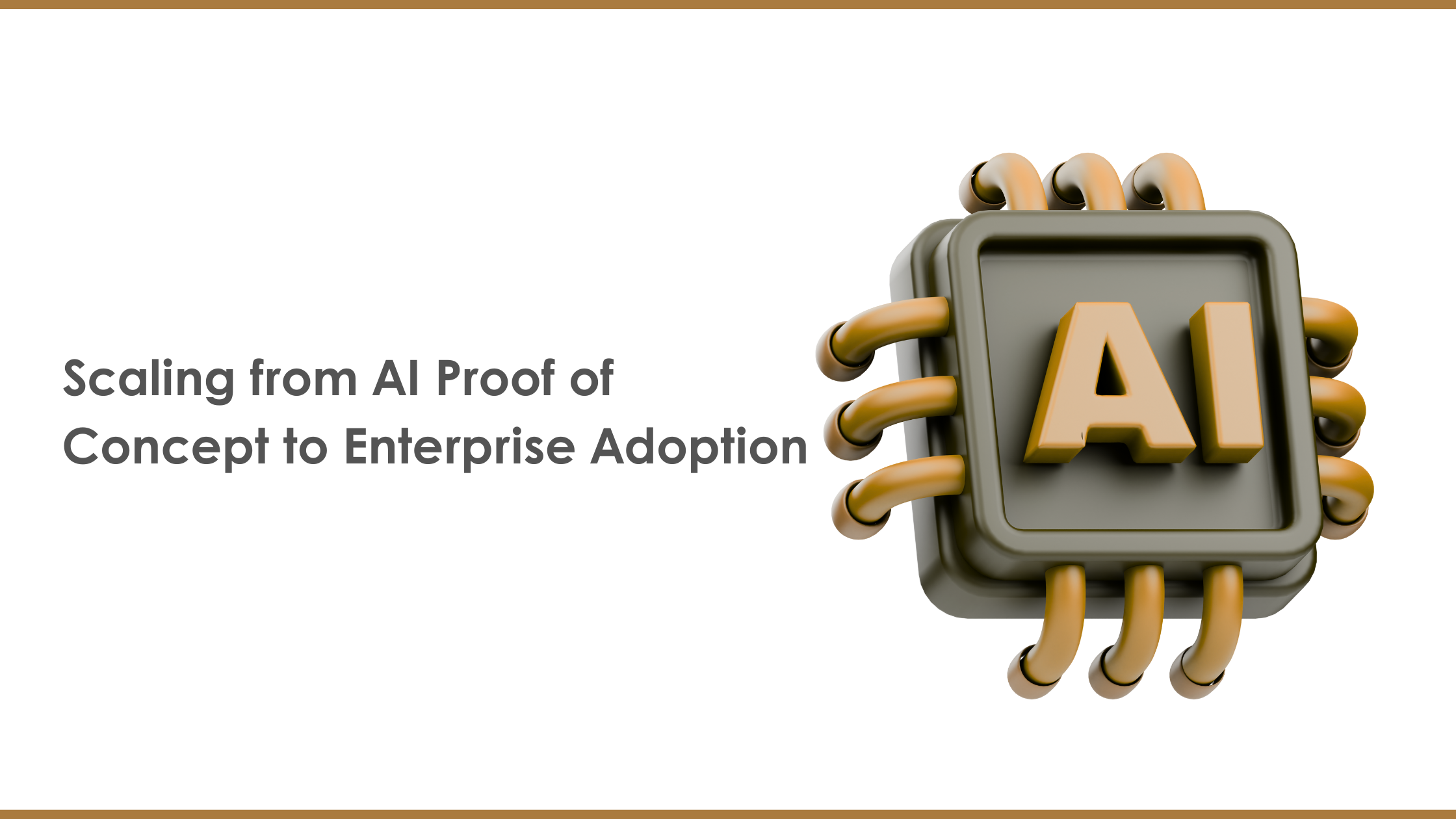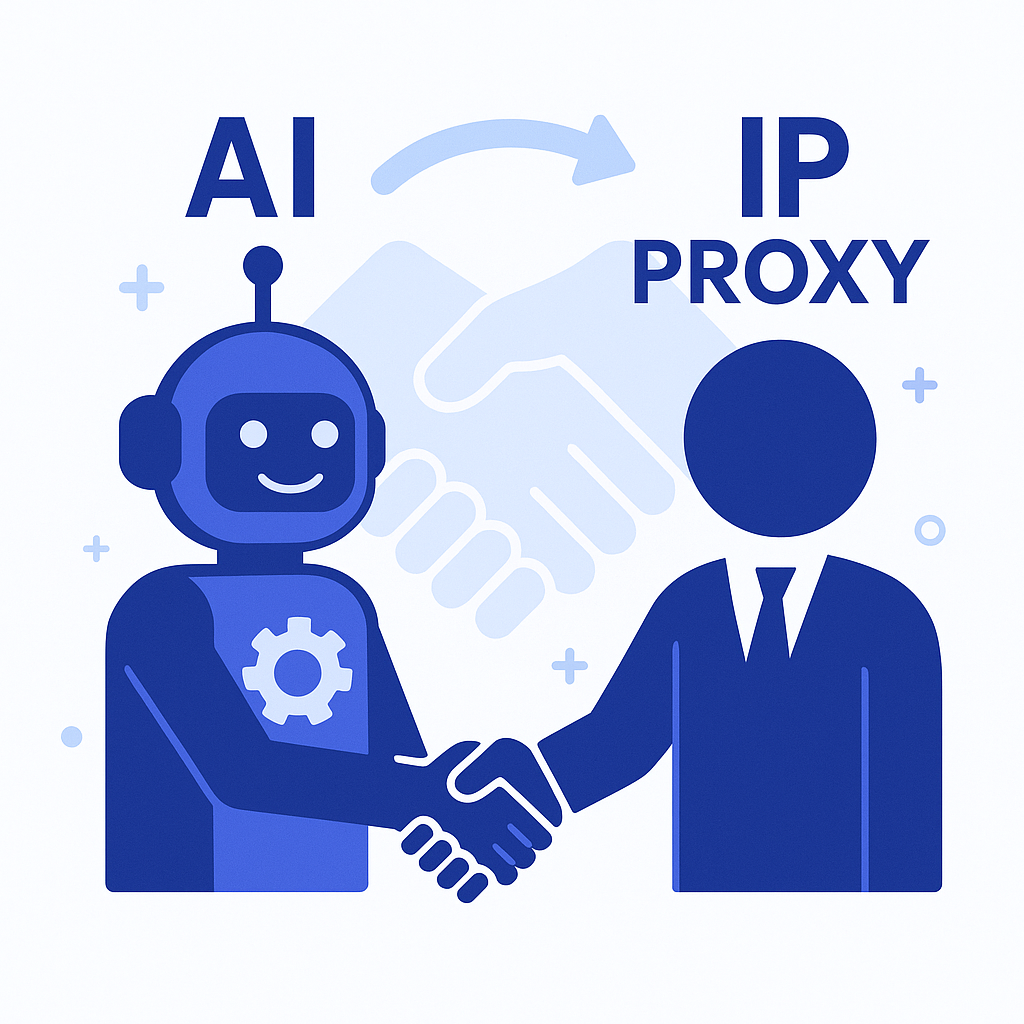Scaling from AI Proof of Concept to Enterprise Adoption

Strong 8k brings an ultra-HD IPTV experience to your living room and your pocket.
Completing an ai proof of concept can feel like a landmark achievement, confirming your AI vision on a small scale. Yet the real challenge is turning that pilot success into sustained, enterprise-wide impact. This transition demands advanced planning across data pipelines, organizational culture, cost management, and robust DevOps strategies. In this blog, we’ll outline the steps, considerations, and best practices to scale AI beyond a pilot, ensuring real-time intelligence becomes core to your business operations.
1. Lessons Learned from the Pilot
Technical Insights: Was model accuracy acceptable? Were data volumes manageable? Identify performance bottlenecks—like slow queries or overtaxed GPUs—to address before broad rollout.
Business Alignment: Did the pilot confirm a meaningful ROI or user satisfaction gain? If so, highlight these wins to gather momentum across other departments.
Areas for Improvement: Pinpoint data or operational gaps. Maybe the model faced repeated edge cases or the deployment pipeline slowed engineering cycles.
Understanding these pilot outcomes shapes your scaling roadmap, preventing repeated mistakes or underestimates.
2. Architecture and Infrastructure Upgrades
2.1 Cloud vs. On-Premises
If your PoC used a small cluster on the cloud, consider how large-scale adoption might demand multi-region deployment or specialized GPU nodes. Assess cost, performance, and compliance constraints thoroughly.
2.2 DevOps and MLOps
Enterprise-level AI needs automated build, test, and deploy pipelines. MLOps frameworks ensure your model versions remain consistent across dev, test, and production, and that re-training or model rollback is easy.
2.3 Data Lake or Warehouse
To handle bigger data sets from more sources, robust data lakes (like AWS S3, Azure Data Lake) or enterprise data warehouses (like Snowflake or Redshift) become crucial. They unify data for batch or streaming ingestion, maintaining reliability under heavy loads.
3. Organizational Readiness
Skilled Talent: Large-scale AI typically needs data scientists, ML engineers, platform architects, and domain specialists. Hiring or training internal staff is vital.
Cross-Functional Teams: AI success often requires bridging finance, marketing, or supply chain. Setting up dedicated squads fosters synergy.
Change Management: Communicate how the scaled AI solution complements, not replaces, human roles. Provide training so employees maximize AI outputs rather than ignore them.
4. Budget and ROI Management at Scale
4.1 Cost Governance
Resource usage often multiplies post-pilot. Use cost monitoring dashboards to track GPU utilization or cloud resource expansions. Tools like AWS Budgets or Azure Cost Management can create real-time spending alerts.
4.2 ROI Expansion
If the pilot saved 15% labor hours in a single team, rolling out across multiple divisions might replicate that saving. Compare final budget expansions to incremental cost savings or new revenue potentials for buy-in from finance leads.
4.3 Vendor Partnerships
Scaling might also mean deeper partnerships with AI library vendors, or specialized data labeling firms. Evaluate licensing or usage-based fees to avoid cost surprises.
5. Deployment Approaches for Enterprise AI
Phased Rollouts: Deploy the AI solution to one department at a time, collecting feedback for iterative improvements.
Parallel Workflows: Run new AI-driven workflows alongside older systems (shadow mode) to confirm stable performance before full switch-over.
Central vs. Distributed: Decide if you store all intelligence in a central cluster or deploy mini AI modules near user endpoints (edge computing), balancing latency demands with hardware constraints.
6. Monitoring and Continuous Improvement
6.1 Observability
Implement comprehensive logs, metrics, and dashboards. Track error rates, latency, user satisfaction metrics, and model accuracy. If the AI solution experiences data shifts or performance drifts, alert relevant teams quickly.
6.2 Model Retraining
Real-world data changes—like new customer behaviors, different product lines, or emerging language usage—can degrade model accuracy. Schedule re-training or adopt an “always-learning” approach if your pipeline supports streaming data.
6.3 Incremental Feature Enhancements
Once stable, you can expand functionality. E.g., if your AI solution started as a chatbot for English only, you might add multi-language features or deeper sentiment analysis next.
7. Ensuring Security and Ethical Compliance
Access Controls: As more teams utilize the AI system, ensure each only sees relevant data or analytics.
Data Privacy: Comply with GDPR, HIPAA, or local regulations. Large-scale expansions risk more data exposure if not tightly governed.
Ethical Oversight: More advanced or automated AI can lead to decisions about user data usage, potential biases, or fairness. Regular audits protect your brand and users alike.
Conclusion
Graduating from a successful ai proof of concept to full-fledged, enterprise AI solutions requires meticulous planning, robust architecture, expanded skill sets, and effective cost governance. As your pilot’s benefits scale—whether via cost savings, new revenue streams, or operational efficiency—the complexities of data, compliance, and user adoption grow as well. By tackling these systematically—upgrading infrastructure, ensuring cross-functional collaboration, and maintaining consistent performance checks—organizations transform pilot success into a bedrock for sustained innovation and competitive differentiation.
Note: IndiBlogHub features both user-submitted and editorial content. We do not verify third-party contributions. Read our Disclaimer and Privacy Policyfor details.







